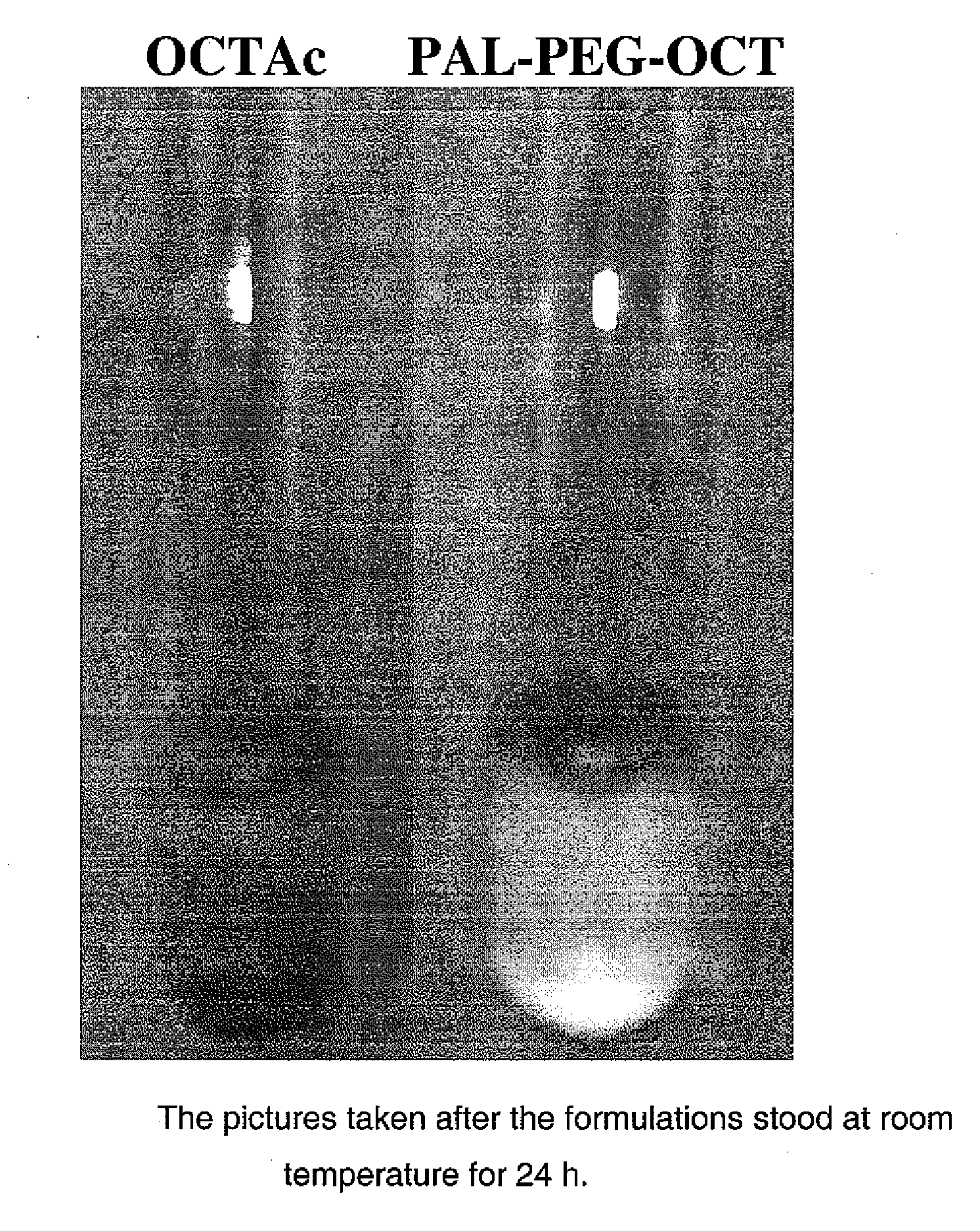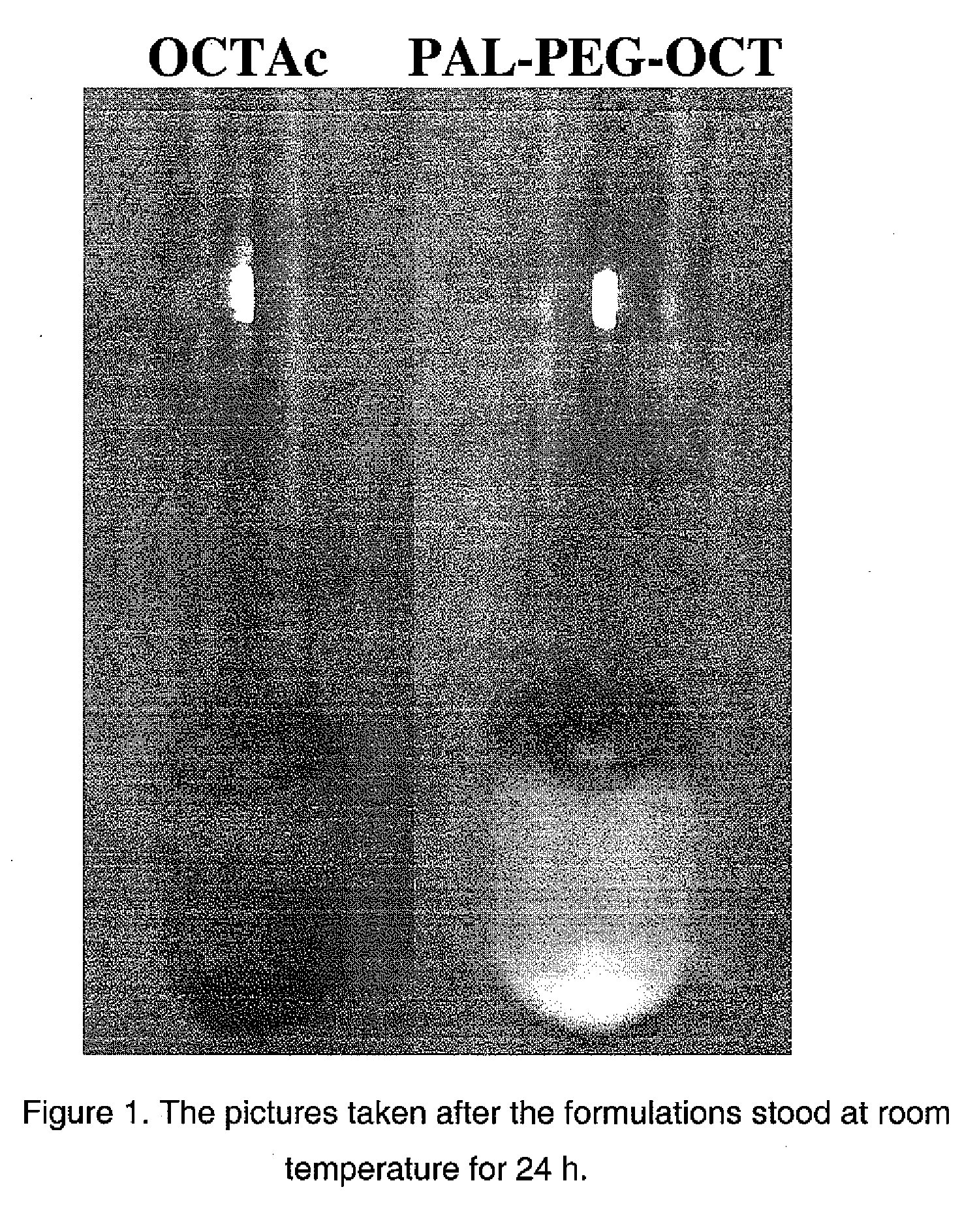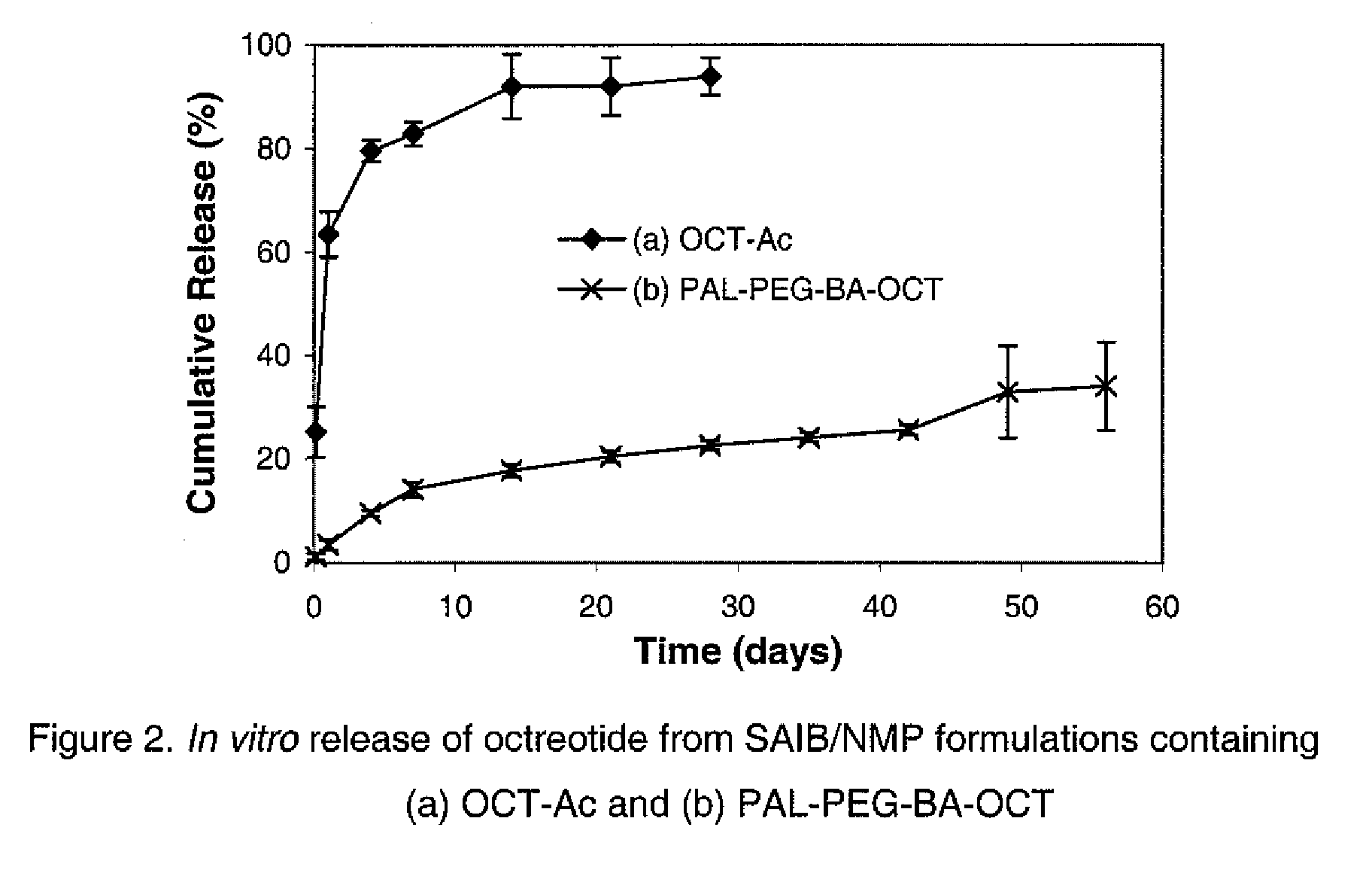Composition for Sustained Release Delivery of Proteins or Peptides
a technology which is applied in the direction of peptide/protein ingredients, drug compositions, metabolic disorders, etc., can solve the problems of reducing the burst effect, uncomplexed protein or peptide or its simple salt such as acetate salt, and being susceptible to chemical degradation, so as to improve the release profile of protein or peptide, improve the compatibility with non-polymer carrier materials, and low viscosity
- Summary
- Abstract
- Description
- Claims
- Application Information
AI Technical Summary
Benefits of technology
Problems solved by technology
Method used
Image
Examples
example 1
Preparation of Palmitoyl-Octreotide (PAL-OCT)
[0062]50 mg of octreotide acetate was dissolved in 1 mL of anhydrous DMSO containing 100 μL triethylamine (TEA) 40.2 mg of palmitic acid N-hydroxysuccinimide ester (Mw 353.50) was dissolved in 3 mL anhydrous DMSO and added to the peptide solution. The reaction was allowed to proceed for 3 hours at room temperature. The mixture was poured into diethylether to precipitate palmitoylated octreotide. The precipitate was washed with diethylether twice and then dried under vacuum. The resulting acylated peptide was in the form of a white powder.
example 2
Preparation of Palmitoyl-Octreotide (PAL-OCT)
[0063]50 mg of octreotide acetate was dissolved in 1000 □L of anhydrous DMSO containing 100 μL TEA. 17.1 mg of palmitic acid N-hydroxysuccinimide ester (Mw 353.50) was dissolved in 3 mL anhydrous DMSO and added by direct injection to the peptide solution. The reaction was allowed to proceed overnight at room temperature. The mixture was poured into diethylether to precipitate palmitoylated octreotide. The precipitate was washed with diethylether twice and then dried under vacuum. The resulting acylated peptide was in the form of white powder.
example 3
Preparation of Decanal-Octreotide (DCL-OCT)
[0064]50 mg of octreotide was dissolved in 2 mL of 20 mM sodium cyanoborohydride (Mw 62.84, NaCNBH3) (2.51 mg) solution in 0.1 M acetate buffer at pH 5. 13.7 mg of Decanal (Mw 156.27) (OCT:DCL=1:2) was added by direct injection to the peptide solution. The reaction was allowed to proceed overnight at 4° C. The mixture was separated by centrifugation. The precipitated DCL-OCT was freeze-dried.
PUM
| Property | Measurement | Unit |
|---|---|---|
| Temperature | aaaaa | aaaaa |
| Temperature | aaaaa | aaaaa |
| Percent by mass | aaaaa | aaaaa |
Abstract
Description
Claims
Application Information
 Login to View More
Login to View More - R&D
- Intellectual Property
- Life Sciences
- Materials
- Tech Scout
- Unparalleled Data Quality
- Higher Quality Content
- 60% Fewer Hallucinations
Browse by: Latest US Patents, China's latest patents, Technical Efficacy Thesaurus, Application Domain, Technology Topic, Popular Technical Reports.
© 2025 PatSnap. All rights reserved.Legal|Privacy policy|Modern Slavery Act Transparency Statement|Sitemap|About US| Contact US: help@patsnap.com



